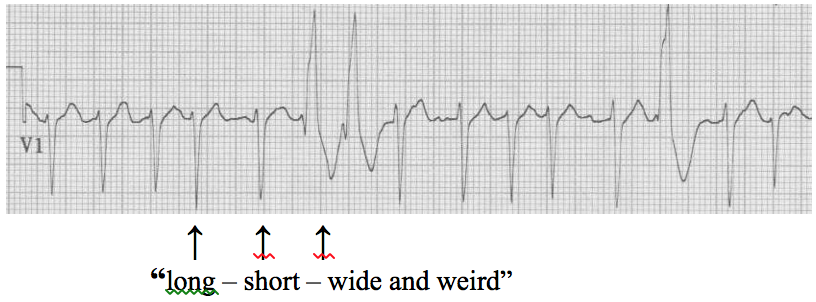
30-year-old man with palpitations after a night of partying.
This rhythm is a rapid irregularly irregular rhythm at about 170/minute. It is mainly a narrow complex tachycardia, with seven wide beats of a different morphology. This rhythm is rapid atrial fibrillation. The wide-complex beats could be PVCs or, in the setting of rapid atrial fibrillation, Ashman’s phenomenon would suggest these could be aberrantly conducted supraventricular beats.
Ashman’s phenomenon occurs because the repolarization period for any QRS complex is proportional to the R-R interval preceding the complex (bradycardic rhythms with longer R-R intervals have longer QTc intervals). Therefore, when a relatively long R-R interval is followed by a short R-R interval, that third beat may find part of the conduction system refractory – in fact, usually the right bundle (the longest bundle) is the refractory part of the conducting system, and the resulting aberrantly conducted beat will have a RBBB morphology (tall R wave in V1).

and as long as the R-R interval remains short, the aberrancy persists – notice the RBBB morphology with tall R waves in this V1 rhythm strip
— see EKG discussion “Ashman phenomenon” on the home page (scroll down)





